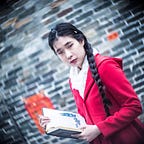There are no originals: Fairy Tale Retellings
After seeing Beauty and the Beast, I am musing if my love and acceptance of live action Disney comes from the fact that I do not regard their animated films as sacred or definitive.
I had an insatiable hunger for fairy tale retellings in my youth. They were all the harder to track down before the advent of wikipedia and tvtropes. I read more than I realistically rememeber or list now. I was always fascinated by that interplay of the familiar and unfamiliar.
And so here I am now, adring the Disney clasics, but I am quite happy to have another set be added to the canon. I’ve also always wanted to write my own versions of the old fairy tales[1], I really don’t regard it as creatively bankrupt to do so.
Fairy tales are meant to be retold and imbued with new meaning. That is their memetic purpose. Their imagery is resiliant and powerful, but this not because they are singular and unchanging in their meanings but because they are myriad. Their simplicity invites reinvention. They can refract the present.
Subtexts shift with the each storyteller, with each reader[2].
This is not to say that there should not be new stories. There absolutely should and I’m not shilling for a world with nothing but fairytales.
But I do consider a fairytale retelling to have a lot more potential for innovation and new symbolism than, say, a new take on Transformers, Matrix or Godzilla. The symbolism behind these more modern, more complex stories are quite fixed. They are what they are. Recreations must be true to the original and that fundamentally limits the new creator.
But, say, Cinderella has no original to be true to. She can have a thousand faces.
Into the Woods has an indecisive Cinderella who leaves a shoe because she doesn’t know if she really wants to be a prince after having danced with all night. Gail Carson Levine’s Ella Enchanted has a strong-willed girl who is cursed with obedience. Jim C. Hines’ Cinderella wields a glass sword, as timely a gift from her mother as the golden dress and glass slippers. Mercedes Lackey shifts the story to England just after the First World War and it is a four-fingered glove that Cinderella leaves behind. Throne of Glass imagines Cinderella as an assassin. Gregory Maguire turns the tables and tells the tale from the stepsister’s point of view in Confessions of an Ugly Stepsister. Phillip Pullman’s I Was a Rat! gives us the rat’s point of view.
The list goes on and on.
And I can’t see this as a bad thing. Perhaps I am blinded by my own love and nostalgia, but reforging the past idols in our own image seems only natural to me.
And do not speak to me of originals. There are none to be true to. There are only beautiful copies.
[1] And have been doing so for as long as I can remember. I think the first story I remember writing is a retelling of Cinderella. I was about six.
[2] The Little Mermaid is an imperfect example as it is not a folktale, but it has entered that fairytale canon. As wrote in Bad Art Can Inspire, it is my favourite example. It has long be loathed by many feminists as a story where a woman gives up her voice to be with a man. But it can equally be read as a young woman escaping the dominion of an egotistical patriarch to carve out her own identity at great personal cost. The mermaid’s desire to be part of the world above can also be seen as an allegory for immigration. It can also be a story of a tragic, unrequited love that cannot be spoken, one that is coded queer by its author.
